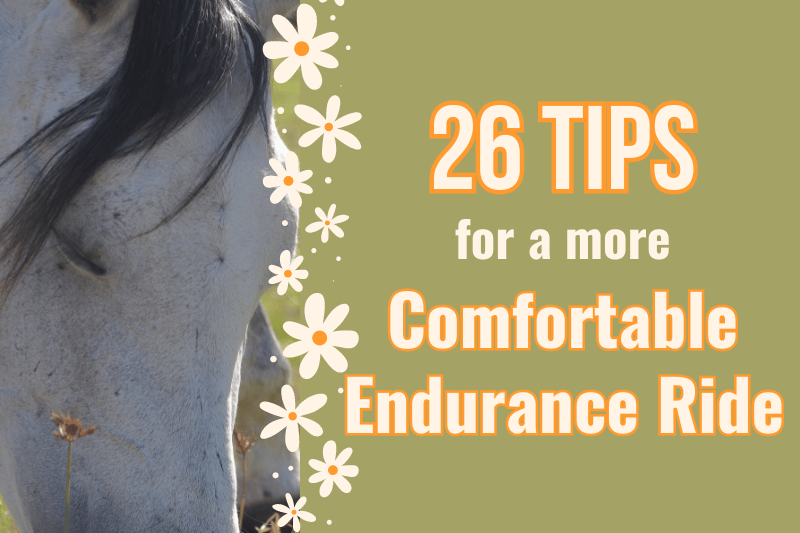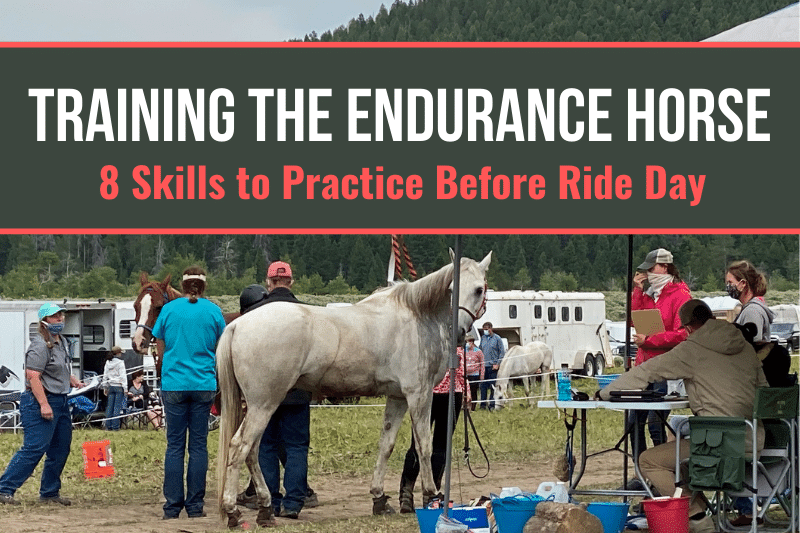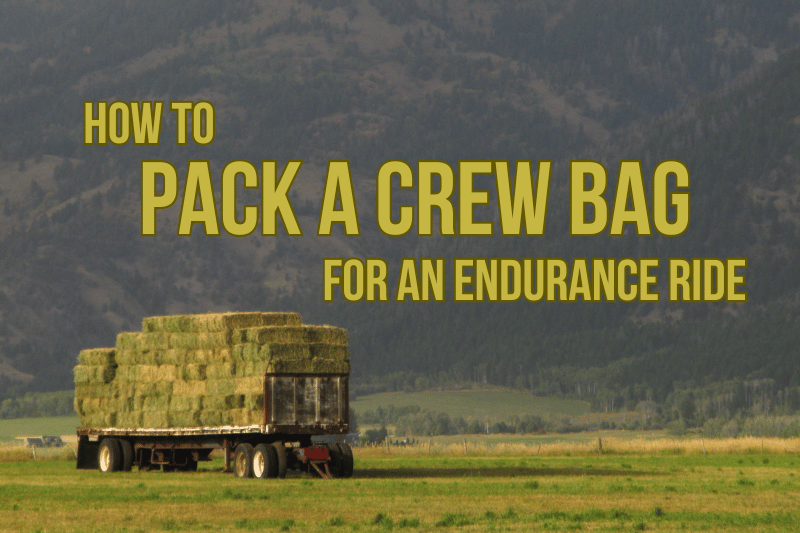Nobody chooses equestrian endurance riding for its comfortable reputation. You’re always going to have to push through if you want to ride 25 to 100 miles in a single day. Still, the more comfortable the horse and rider can be, the better time both athletes will have.
Comfort was the subject of a January 30, 2024, webinar offered by the good folks at the Old Dominion Equestrian Endurance Organization (ODEEO). Lani Newcomb, DVM, Teri Carroll, Bob Walsh, and Dave Franklin generously shared the wisdom that comes from experience.
This post summarizes my notes from the ODEEO webinar. I’ve credited each tip to the presenter who offered it, as they generously invited riders to contact them for more information. Additionally, the presentation was recorded, so watch for it to pop up on ODEEO’s YouTube.
26 Tips for a More Comfortable Ride, Courtesy of ODEEO
The presenters broke their presentation into four categories: Physical comfort for the horse, physical comfort for the rider, emotional comfort for the horse, and emotional comfort for the rider.
Physical Comfort for the Endurance Horse
Teri began by noting that our horses depend upon us for their physical comfort. We need to ensure that they have excellent health, proper training for the task, safe accommodations, quality feed, well-fitted tack, and a balanced rider.
The presenters went on to offer specific advice for the comfort of your horse:
- Vaccinate your endurance horse 2 – 4 weeks prior to competition, as it can make them feel crappy for a while afterwards. (Lani)
- Be vigilant about gastrointestinal ulcers. Pre-treat with a full tube of UlcerGard daily for 3 – 4 days in advance, then continue with the AERC-legal dose of ¼ tube on ride morning. Yes, it’s expensive, but you’ve spent many years and resources getting to this point and a happy tummy is critical for your horse to feel and perform his best. (Lani)
Not everyone obsesses about ulcers as much as they should.
~ Lani Newcomb, DVM
- Get a trailer camera to make sure your horses are comfortable during travel. Watch for companionship with their neighbors and plenty of eating. They should hop off the trailer and continue to eat because they are relaxed and unbothered by ulcer pain. The more they eat, the more they will drink as well. (Lani)
- Make sure your horse is familiar with his ride camp accommodations prior to being confined at ride camp. Practice with your portable panels or high tie at home. (Bob)
- Check and re-check tack fit frequently throughout the season. It may change as your horse’s body develops. (Teri)
- You can still enter a ride if your horse’s conditioning isn’t where you’d like it to be. Just adjust your expectations and slow down to keep your horse safe. (Lani)
- Study up on equine electrolytes. Dig into the education section of the AERC website. Start with a simple electrolyte protocol, not the most complicated one, and adjust from there. (Lani and Teri)
- If your horse isn’t eating well, try taking a deep breath and slowing yourself down. (Teri)
Physical Comfort for the Endurance Rider
Teri highlighted the basics of rider physical comfort: caring for your own health, proper training for the task, good sleep, quality food, and the right clothing.
- If you aren’t sleeping well in ride camp, try to figure out why. If you’re kept awake by worry that you won’t be able to get to your horse in time if something goes wrong, try sleeping in clothes (if you don’t want to show off your underwear at a midnight rodeo) and keeping shoes by the door. If it’s awkward to get out of your camper in a hurry, or you can’t hear your horse, consider sleeping in your trailer instead. (Teri and Lani)
- Premedicate with an NSAID like Aleve, rather than waiting until you’re in pain. (Lani)
- Be vigilant about your own electrolytes. Fatigue, sleepiness, and getting overly emotional can all be symptoms of low electrolytes. Salty food isn’t necessarily enough. Carry electrolytes on your saddle in case you need them on the trail. (Lani)
- “Quality food” is whatever gets you to the finish line. Find out what works for you and make sure you have it available. (Teri)
- Bra rubs can be extremely painful. To prevent them, wear a tight tech shirt under your sports bra. The bra will rub the shirt instead of your skin. Rubbing on your legs can be addressed similarly by wearing a slippery pants layer over your riding tights. (Lani)
- Never, ever try new clothing on ride day, no matter how wonderful someone says it is. (Teri)
- Keep your perfect race-day clothes in a bag in your trailer so you never get to a ride without them. (Lani)
Emotional Comfort for the Endurance Horse
Teri noted that the horse’s emotional comfort relies upon proper training, understanding expectations, trust in the partnership, and the right mix of companions.
- Horses learn to trust us as their partners when we notice they are unhappy and make adjustments. (Teri)
- During conditioning, practice the routines you want to work at an endurance ride. For example, have snacks at the trailer so your horse learns to eat as soon as he’s done working. (Teri)
- Keep your horse’s companions (or lack thereof) the same at a ride as he’s accustomed to at home. You should know which horses he’s comfortable resting and riding with. When maintaining the status quo isn’t possible at a ride, be prepared to do what it takes to respond if he’s not happy with the situation. Don’t be afraid to leave a group of riders or ask to join one if that’s what your horse needs. (Teri and Dave)
- If your horse is a fast walker, don’t penalize him for that by forcing him to hang back with slower horses. Let him move out. (Lani)
The only way to train for an endurance ride is to show up.
There's no substitute for the ride itself.
~ Lani Newcomb, DVM
- Be prepared for your horse’s challenging behavior for the first 40 minutes or so of a ride. Do whatever it takes to make both of you as calm as possible. It’s fine to wait until everyone else is long gone down the trail before you even bridle your horse. (Lani)
Emotional Comfort for the Endurance Rider
Teri observed that emotional comfort for the endurance rider relies upon understanding expectations, trusting one’s partnership with the horse, having the right companions, and being prepared with a plan.
- Go for a short pre-ride the evening before the event. It’s reassuring to know you didn’t forget any tack and everything is adjusted correctly. (Lani)
- In ride camp, choose the environment that works for your personality. If you love to be around people, settle in near the chatty, laughing group. If you prefer a quieter spot, select that instead. (Teri)
- Don’t feel like you need to stick with a riding companion that isn’t working for you. It’s okay to vote someone off the island. (Teri)
- Get clear on your intentions before the ride starts. Make sure your goals for the day are realistic and stick to them regardless of what others may be doing. Don’t get caught up in the race. Take the wins from your own personal goals. (Bob and Teri)
- If you are new to endurance, let go of worry about what people will think. This is a very forgiving sport. The only thing others care about is whether you take care of your horse. (Lani)
Sometimes there's more reward for not getting an award.
~ Teri Carroll
You might also like
This post includes affiliate links, and I may earn a small commission (at no extra cost to you) when you purchase through these links. I only recommend products and services I think are helpful and useful. Thanks for helping me offset the cost of maintaining this blog as a free resource!






Do you know what product Lani recommended for human electrolytes, the capsule form? I should have written it down
I think she said S Caps — maybe this one by Succeed? https://www.succeedscaps.com/succeed-buffer-electrolyte-caps/